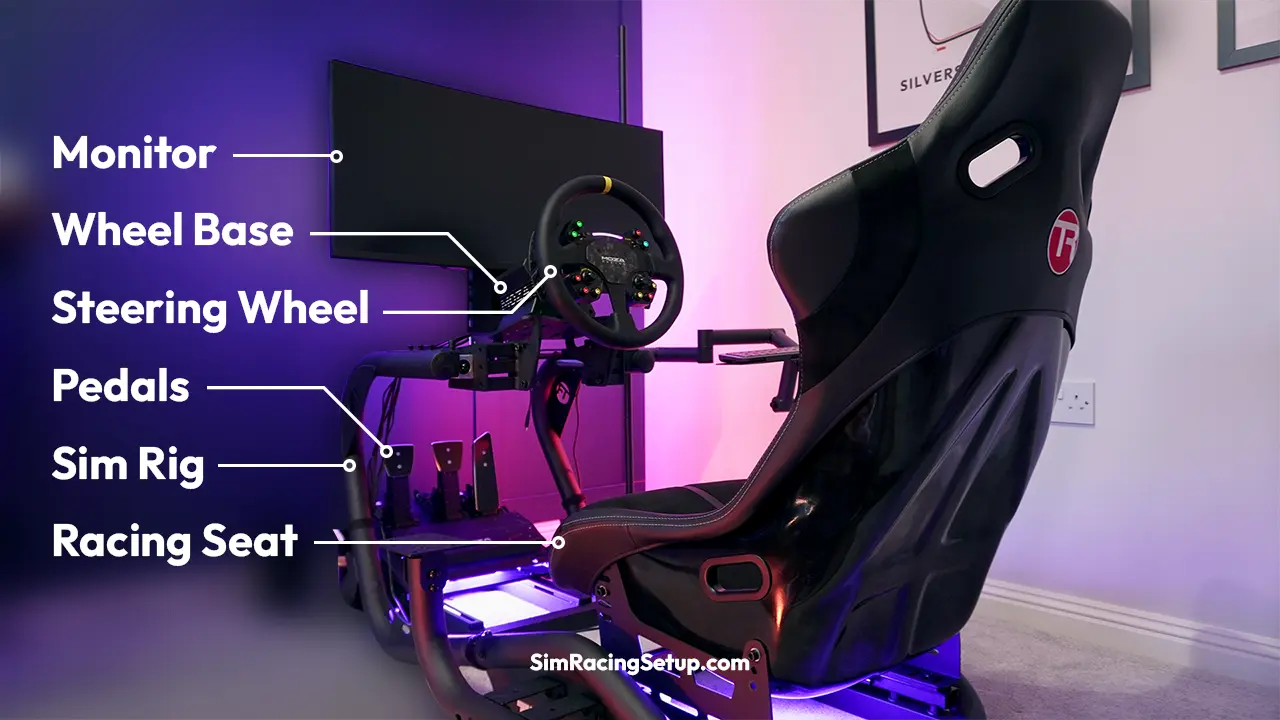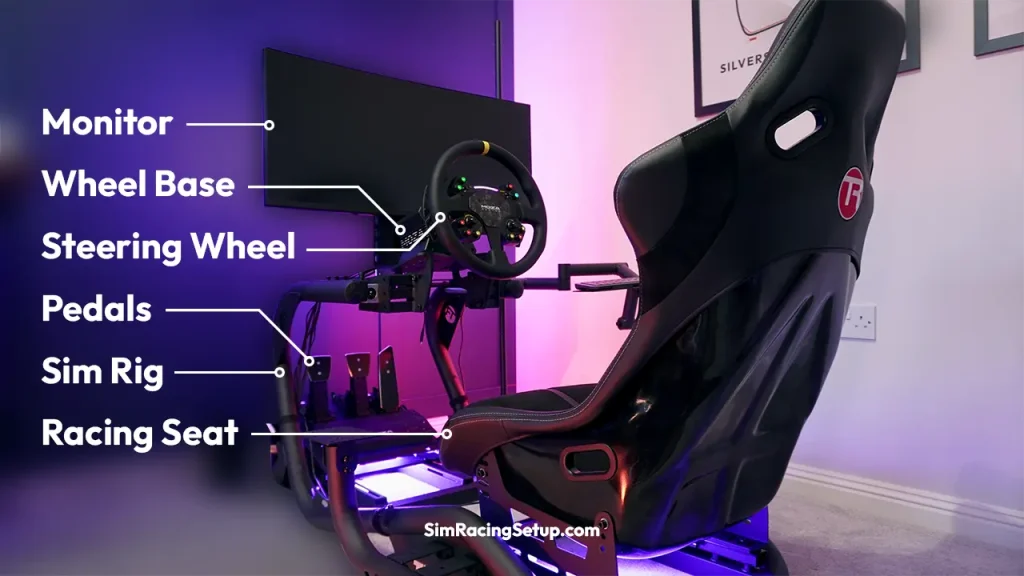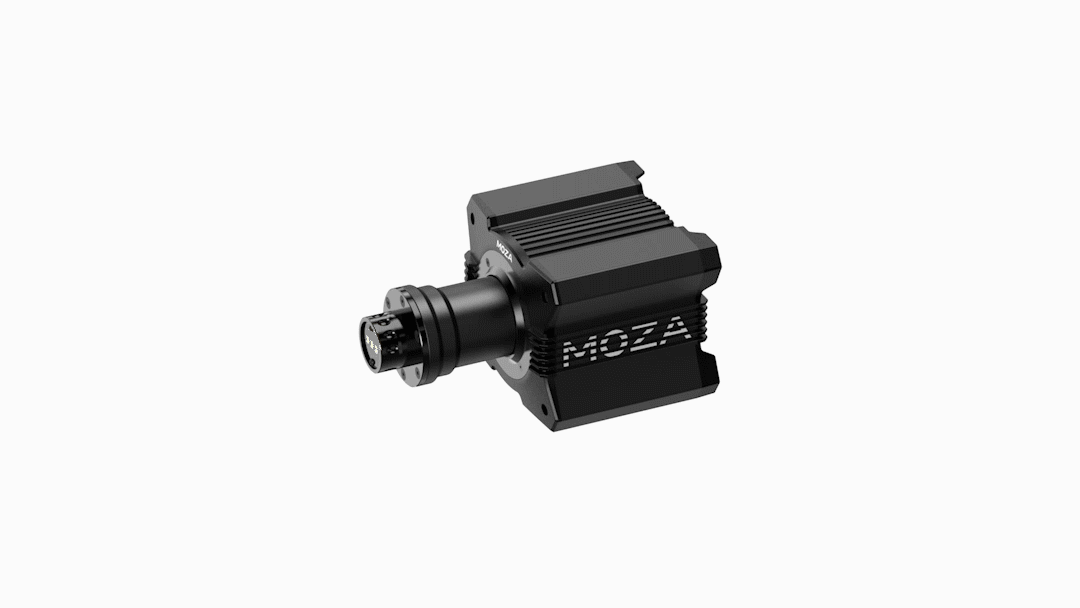
Here is our beginners guide to the perfect sim racing setup. I'll run you through every part of a sim racing setup, so you can create and build your first sim racing cockpit.

Disclaimer: Some of the links on this page may be affiliate links. We earn a commission from any sale after clicking an affiliate link. Find out more.
Subscribe to get a 10% discount on your first setup purchase, and the latest sim racing guides in your inbox.
In this ultimate beginners guide, I’m going to look at how to create a sim racing setup, and how to get started sim racing. I’ll show you all of the components that go into building a sim racing setup, to help you get up and running.
Sim racing as a sport and a hobby grew in popularity hugely throughout 2020, 2021, 2022 and 2023. Many gamers and motorsport fans were looking for a new hobby which could be done at home, and sim racing ticked that box.
When you initially look at sim racing, it can be viewed as an incredibly competitive sport and it certainly can be in some scenarios. But most importantly, it is a hobby that should be enjoyed.
Sim racing can be enjoyed in a variety of ways, from the odd casual race at home to competing in professional events. Sim Racing can be enjoyed, no matter if you are racing solo races in games such as Assetto Corsa Competizione or F1 23, or racing competitively each week in iRacing.
In this guide, I’m going to show you around a sim racing setup. I’ll look at the different components that make up a sim racing cockpit, and talk about entry requirements such as what spec of PC you need, and which peripherals you need to get started.
Jump To Section hideTo start sim racing, you only really need a game controller, a console or PC and your chosen racing game. However, to really get immersed in sim racing you will want to add elements such as a racing wheel and some pedals to your sim racing setup.
You will also need somewhere to attach your racing wheel to. This could be as simple as a desk or table, but ideally, you would have a sim rig, sim racing cockpit or wheel stand.
Once you have a racing wheel, pedals and a sim rig, you are really cooking on gas. At this point, you have everything in place for your sim racing setup. You can then start to add additional peripherals such as shifters, handbrakes and more at your own speed.
Having a look at a typical sim racing cockpit shows us exactly which peripherals many sim racers utilise and how they set them up.

You can see in the image that at the heart of every sim racing cockpit is the sim rig. This is the platform to which all other sim racing peripherals are mounted to. There are a variety of different types of sim rigs, which I’ll talk about in more detail in the sim rig section below.
Towards the rear of the sim racing cockpit is the racing seat, and directly in front of that is the racing wheel. A sim racing wheel consists of a few components.
You have the wheel base which is the block that sits behind the steering wheel and generates the force feedback. The wheel base is then connected to your steering wheel via a quick release or hub. Again, I’ll talk about these in much more detail below.
Towards the front of the sim rig, you’ll find the pedals, and above these, you will often find a monitor or a series of monitors mounted.
Finally, to the side of the racing wheel and seat, you will often find a handbrake and/or a shifter mounted. This isn’t required but is often useful if racing a manual car, drifting or rallying.
In entry-level sim racing wheels such as the Logitech G923, the steering wheel and wheel base often come together and are physically attached.
These types of racing wheels are designed for convenience and allow people to get started sim racing with as much ease as possible. By purchasing an all-in-one racing wheel, you’ll often save money and won’t need to worry about purchasing a wheel base, quick release and steering wheel individually.
With more high-end or professional products such as those from Fanatec or SimuCube, you will often buy the wheel base separately from the steering wheel. This allows you to customise your set-up by adding different steering wheel rims.
This approach also allows sim racers to upgrade their wheel base to a different model without necessarily changing or buying a new steering wheel. A separate wheel base allows for more flexibility when upgrading or customising your sim racing set-up.



A sim racing wheel base is the term given to the part of the racing wheel which produces force feedback. Inside the wheel base is a motor that creates the forces.
Force feedback is then sent to the wheel shaft and in turn the steering wheel either directly from the motor, or via a series of belts and gears. The internal motor is the element that drives the steering wheel which allows it to emulate the forces that a real-world car would feel.
Force feedback is the name given to the forces that the motor inside a sim racing wheel base creates. Force feedback allows you to experience a similar feeling that a real-world driver would if they were actually driving the car.
The goal of force feedback is to give you the most realistic feeling via your steering wheel. This in turn will increase your immersion levels and give you a better idea of how your car is reacting to your inputs and the road surface.
Force feedback is always created by the motor within the wheel base, but there is a selection of different technology which is used to translate the forces from the motor to the motor shaft.

These technologies include gears and belts which are typically found on lower-powered motors. For high-powered motors there is a technology called direct drive which is the term for when the motor is directly attached to the motor shaft.
Direct drive racing wheels mount a larger motor directly to the wheel shaft. This allows for stronger forces and more detailed force feedback. Typically, direct drive racing wheels are the premium option.
Gear-driven racing wheels utilise a much smaller motor which is connected to the steering wheel via a series of gears which translate the force feedback. These are typically found in the cheapest sim racing wheels.
Belt-driven racing wheels utilise belts instead of gears, paired with a small motor. Belt-driven racing wheels are often smoother than racing wheels that utilise gears. But they aren’t as detailed as direct drive wheels.
Below are our recommendations for the best sim racing wheels across a range of budgets. This can be looked at as a quick suggestion for which racing wheel to potentially purchase within your own budget.
Best Budget Racing Wheel